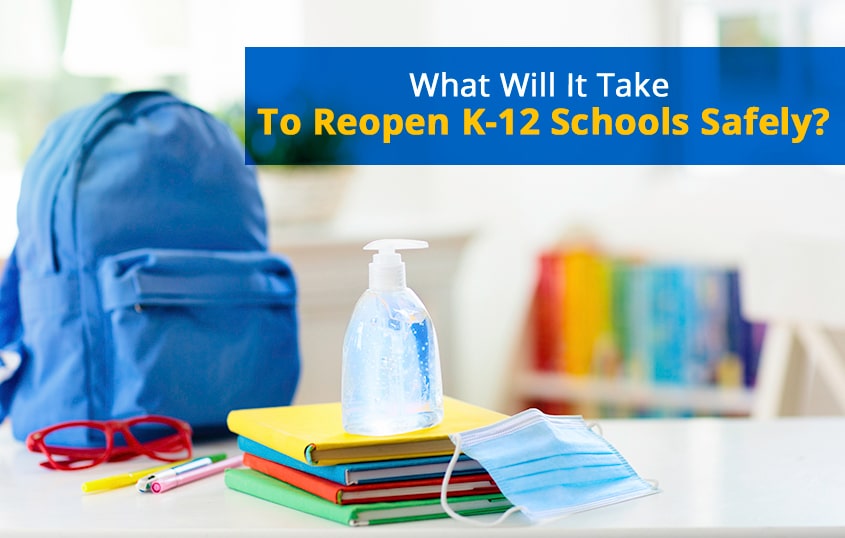
What Will It Take To Reopen K-12 Schools Safely?
With an updated CDC Operational Strategy for K-12 Schools, many schools around the nation are considering how to best prepare for the delivery of in-person instruction. When it comes to securing the physical and hygienic safety of school personnel and students, the approach needs to be twofold, emphasizing hygienic and physical security.
Securing The Reopen K-12 Schools Safely
Based on the CDC’s most recent mitigation strategies, it is recommended based on the best available evidence that schools can safely reopen for in-person instruction and remain so to implement a combination of mitigation strategies to avoid COVID-19 transmission in K-12 school communities, including:
- Universal and correct use of masks
- Physical distancing
- Handwashing and respiratory etiquette
- Cleaning and maintaining healthy facilities
- Contact tracing in combination with isolation and quarantine in collaboration with your region’s health department.
Fortunately, video analytics capabilities can address the new challenges brought about by the pandemic by supporting these mitigation strategies. For instance, video surveillance analytics can be utilized for contact tracing and to monitor and enforce occupancy limits. Many video surveillance systems now include software that can count people to prevent high occupancy levels in cafeterias, hallways, and classrooms to allow for social distancing.
Some districts have already gone as far as to implement symptom screening measures with thermal cameras and temperature analytics to ensure students, staff, and visitors are not showing signs of a fever. Some of these systems even include software that can detect whether an individual is wearing a mask.
Physical Security
While transmission mitigation strategies are supported by security solutions, physical security cannot fall to the wayside during the reopening. Given that each state varies with school security needs and requirements, schools can take several measures to improve their physical security. These include:
- Safety and risk assessments
- School security and crisis training initiatives
- Emergency preparedness plans (including lockdown procedures and exercise drills)
- Monitoring/controlling entrances with access control systems and security cameras
- Partnerships with local law enforcement and county officials
- Fire and life safety alarm systems
- School security personnel
These are just some of the basics when it comes to ensuring physical school security. However, it is also essential to determine your school’s specific security needs based on region, size, community, and existing infrastructure.
We’re Here to Assist
At SSP, you’re in the hands of the industry’s best experts in school security. The safety of students and staff at your school campus is of utmost importance, so why not make the necessary upgrades?


